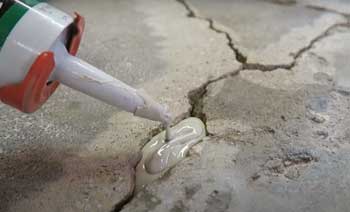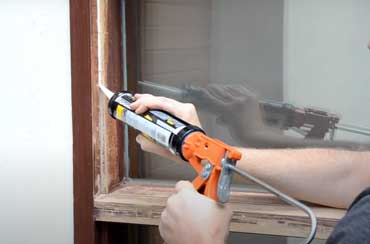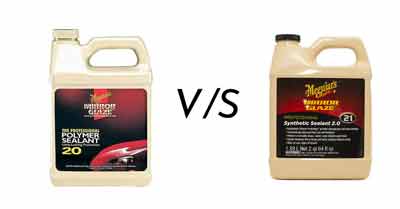What Is Acoustical Sealant: Uses, Installation & Apply Guide

An acoustical sealant is a material used to fill in gaps and cracks in order to prevent sound from leaking through. It is often used in construction and renovation projects in order to improve the acoustic properties of a room or building.
An acoustical sealant is a type of sealant that is specifically designed to block out noise. It is usually made from a variety of materials, including rubber, foam, and fiberglass.
Acoustical sealants are used in a variety of applications, such as sealing doors and windows in homes and office buildings.
Where Do You Apply Acoustical Sealant?
Acoustical sealant is a type of caulk that is used to seal gaps and cracks in walls, ceilings, and floors. It is also used to seal electrical outlets, light fixtures, and plumbing fixtures. Acoustical sealant is made from silicone or latex and can be applied with a caulking gun.
What is Acoustic Sealing?
Acoustic sealing is the process of creating an airtight barrier between two surfaces in order to prevent sound from passing through. This can be done with a variety of materials, including weatherstripping, caulk, and acoustic sealant.
Acoustic sealing is an important part of soundproofing a room or building, as it helps to isolate noise and prevent it from escaping or entering the space.
How Do You Use Acoustical Sound Sealant?
If you’re looking to block out noise in your home, office, or studio, the acoustical sound sealant is a great option. This type of sealant is specially formulated to create a tight seal that blocks out noise.
Here’s how to use it:
- First, identify the area where you want to apply the sealant. This could be around doors, windows, or any other openings.
- Once you’ve identified the area, clean it thoroughly with a damp cloth. This will ensure that the surface is free of dirt and debris so that the sealant can adhere properly.
- Next, apply the acoustical sound sealant using a caulk gun or putty knife. For best results, apply it in a continuous bead along the edges of the opening.
- Finally, smoothen out the bead with your finger or a putty knife and allow it to dry for 24 hours before using the space again.
Where Do You Put Acoustical Sealant for Vapour Barrier?
In order to ensure that your vapor barrier is effective, you need to seal any gaps or cracks that might allow air to pass through. One way to do this is with acoustical sealant.
Acoustical sealant is a type of caulk that is specifically designed for sealing gaps in walls, ceilings, and floors. It has a number of advantages over traditional caulks, including better adhesion, flexibility, and soundproofing properties.
When applying acoustical sealant, it’s important to follow the manufacturer’s instructions carefully.
In general, you will want to apply the sealant around the perimeter of the vapor barrier, as well as any other areas where there are gaps or cracks.
Once the sealant has been applied, it needs to be allowed to dry completely before moving on to the next step in your project.
Liquid Nails Acoustical Sound Sealant
Few people know that there is such a thing as an acoustic sound sealant. This product is designed to help reduce noise levels in your home or office. It can be used on walls, ceilings, and floors in order to create a barrier between you and the noise outside.
Liquid Nails Acoustical Sound Sealant is easy to apply and dries quickly, so you can enjoy the peace and quiet in no time.
Usg Acoustical Sealant
If you’re looking for an acoustical sealant that can help reduce noise in your home or office, then USG’s acoustical sealant is a great option. This sealant is designed to provide a sound barrier between two surfaces, and it can be used on walls, ceilings, floors, and doors.
It’s also fire-resistant and waterproof, making it ideal for use in areas where these features are important.

Dap Acoustical Sealant
If you’re looking for an acoustical sealant that won’t disappoint, look no further than Dap Acoustical Sealant. This incredible product is designed to provide superior soundproofing and sealing properties in a wide variety of applications.
Whether you’re trying to seal up cracks and gaps in walls and ceilings or you need to soundproof a room, Dap Acoustical Sealant is up to the task.
This top-of-the-line acoustical sealant is made from silicone, which gives it excellent adhesion and flexibility. It also has great resistance to temperature extremes, making it ideal for use in both hot and cold climates. And because it’s water-based, Dap Acoustical Sealant is easy to apply and clean up.
Plus, it dries clear so you’ll never have to worry about unsightly stains on your walls or ceiling. When it comes to soundproofing, Dap Acoustical Sealant does not disappoint. It has an STC rating of 25, which means it can effectively block out unwanted noise.
It’s also great at sealing air leaks, which can help improve the overall acoustic quality of a room. Whether you’re looking to create a peaceful oasis in your home or you need to block out loud neighbors, Dap Acoustical Sealant is the perfect solution.

Acoustic Caulk for Windows
If you have ever had the pleasure of sitting in a room with poor acoustics, you know how important it is to have good acoustic caulk for windows. Acoustic caulk is designed to seal gaps and cracks in walls and ceilings, preventing sound from escaping or entering the room.
It is an essential part of any soundproofing project and can be used on both new construction and existing homes.
There are many different types of acoustic caulk on the market, so it is important to choose the right one for your needs. The most common type of acoustic caulk is made from silicone, which is highly effective at sealing gaps and cracks.
However, silicone can be difficult to work with and clean up, so if you are not experienced with using it, we recommend choosing another type of acoustic caulk.
Latex-based acoustic caulks are another popular option and offer many benefits over silicone-based caulks. They are much easier to work with and clean up, making them a great choice for beginners.
Latex-based caulks also provide superior adhesion properties and flexibility, making them ideal for use in areas that experience movement or vibration.
Acoustic foam tape is another option that can be used to seal gaps and cracks in walls and ceilings. This type of tape has an adhesive backing that allows it to stick firmly to surfaces while still being easy to remove when needed.
Acoustic foam tape provides good sound isolation properties while still being relatively easy to install. When choosing an acoustic caulk for your next project, be sure to consider all of your options before making a decision.
Best Acoustic Caulk
- Green Glue Noiseproofing Sealant: This is a popular choice among soundproofing professionals.
- OSI SC-175 Acoustical Caulk: This caulk is specifically designed for soundproofing and has excellent adhesion properties. It is also water-resistant and can be painted over.
- Auralex Acoustics STOPGAP Acoustical Sealant: This caulk is specially formulated to reduce sound transmission and has excellent adhesion to a variety of surfaces.
- Everkem SS90 Sound Seal 90 Draft, Smoke, & Acoustical Sealant
- Liquid Nails Acoustical Sound Sealant (AS825)
- Franklin International 2892 Sound Sealant.
- Tremco 830 Acoustical Sealant: This is a high-performance, non-hardening sealant that remains flexible and maintains its acoustic properties over time.
There are many factors to consider when selecting an acoustic caulk, such as:
1. The type of surface it will be applied to (smooth or rough)
The size of the gap or crack will be filling the level of soundproofing required
2. Whether or not the area will be exposed to moisture
The ease of application Selecting the right product will ensure that you get the best possible results in terms of both performance and value for money.

Read More About How To Remove Lexel Sealant
Larger areas will require more sealant than smaller ones. And finally, take into account your budget. Acoustic sealants can range in price depending on quality and brand.
Acoustic Sealant Menards
Acoustic sealant Menards is an effective material that can be used to block out noise. It is made of a soft, porous material that is able to absorb sound waves and prevent them from propagating through the air.
This makes it ideal for use in areas where there is a need to reduce noise levels, such as in offices or homes.
How to Install Acoustic Sealant for Drywall
Conclusion
Acoustical sealant is a special type of sealant that is designed to reduce noise. It is typically used in areas where there is a lot of noise, such as construction sites or factories.
Acoustical sealant can also be used in homes to reduce noise from outside sources, such as traffic or neighbors.



![Can Sealant Foam Be Used On Rotten Wood [What You Need to Know]](https://glueanswer.com/wp-content/uploads/2024/01/Can-Sealant-Foam-Be-Used-On-Rotten-Wood-What-You-Need-to-Know-768x432.jpg)


